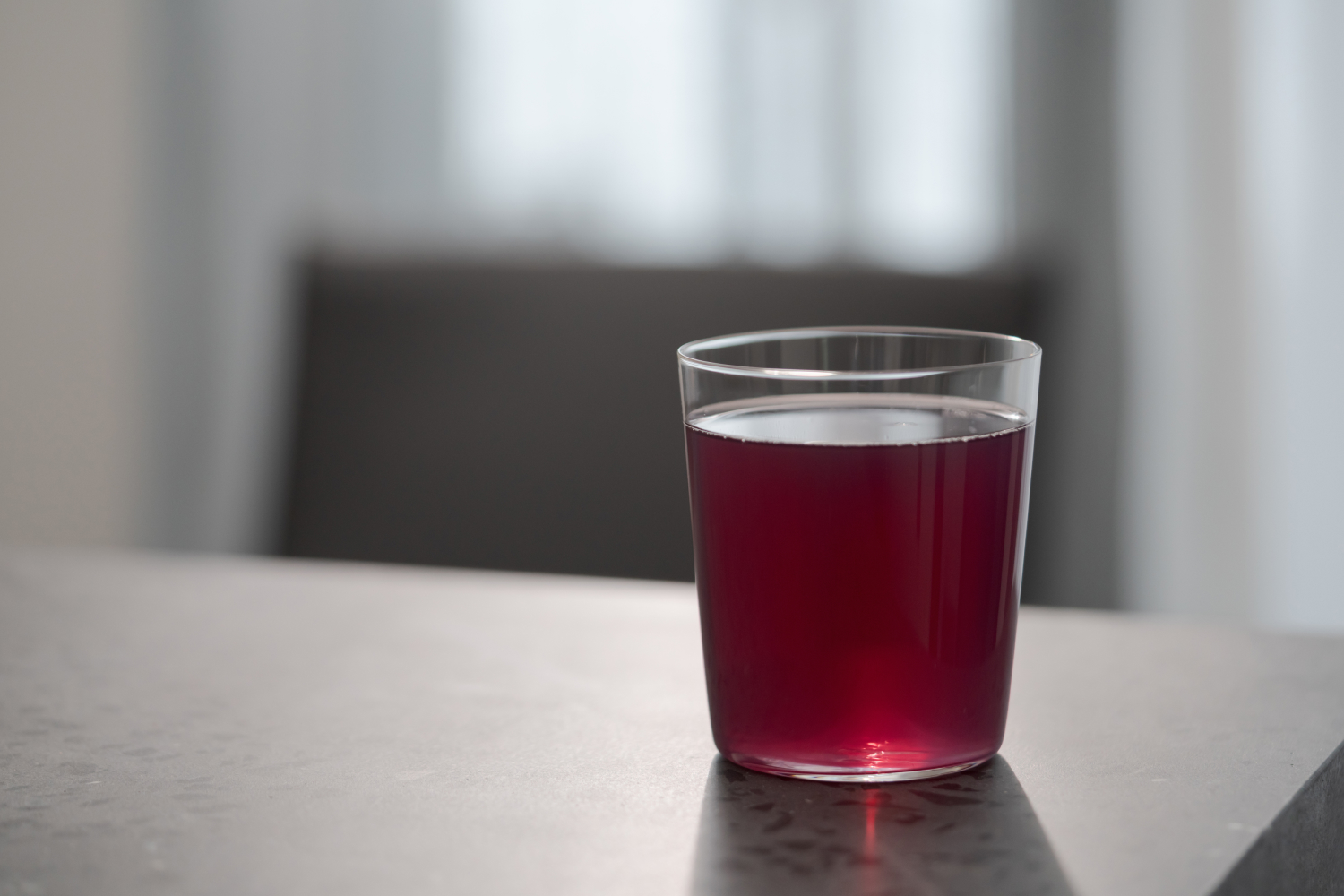You may have heard the term “purple drank” being referred to by celebrities and hip hop stars over the years, seemingly glorifying the use of the drug lean. You may have never known quite what they were talking about.
Lean is a drug that has caused fatalities due to this nonchalant attitude and comes with some very high risks. Lean may seem unattainable because of its status in Hollywood and the music scene, but it’s a concoction that most people can figure out how to create.
If you are ever offered this purple-colored drink, you should know the risks and outcomes that it can have. It’s always best to turn down substances like lean, especially if you don’t know who is creating them or their intended use.
Keep reading to learn more about lean, what the drink is made of, how it can impact you, and the risks of this substance use!
What Is Lean?
Lean is a drug concoction that typically has three main ingredients: prescription cough syrup, sprite or other soda, and a hard candy for sweetness. Once all combined, it resembles a grape or cranberry soda but has a much different effect on the body.
The main component in lean is the prescription cough syrup. Cough medicine can have Promethazine hydrochloride and codeine, which, when combined, can create a drug that impacts your ability to feel pain and heightened euphoric feelings. Over-the-counter cough medicines do not contain these ingredients due to their misuse.
Promethazine hydrochloride is used in antipsychotic medications and antihistamines, while codeine is classified as an opiate medication that treats pain.
If you take cough syrup at the recommended dosages, you should have nothing to worry about. As soon as you begin consuming them in larger quantities for inappropriate reasons, issues like drug addiction and dependency can form.
Some other names that lean is referred to include:
- Purple drank
- Sizzurp
- Dirty Sprite
- Purple lean
How Lean Works in the Body
When the codeine in cough syrup is consumed, it is broken down into morphine once it reaches the liver. Morphine is a highly addictive component in drugs that gives a person a sense of relaxation and euphoria, which can be viewed as pleasurable to some.
As you begin to misuse the drug, your body starts to become accustomed to having the morphine in its system and won’t be able to function properly without it. Morphine binds to the nerves that block out pain at the same time that it sends out a rush of dopamine. It also binds to the brainstem, which controls a person’s breathing.
When a person has low levels of oxygen in the blood, the brainstem sends out a signal to breathe deeper and faster. However, when morphine is bound to the brainstem, this function does not work as efficiently and will not send the signals to your body to breathe. As a result, your body can forget how to breathe in these instances,
How Long Do the Effects Last?
Lean gets its name from the fact that when consumed, a person has a difficult time standing up straight. They tend to lean to one side, unable to maintain balance and control of their bodies. Once a person drinks one glass of lean, they can begin to feel the effects of it after an hour or so, and it can last for up to six hours.
However, because lean is regarded as an opioid, this is a very easy drink to become addicted to. A person will need more of the drink to achieve the same effects as the first time they used it, developing a tolerance before de-evolving into a full-blown addiction.
What Are the Dangers of Purple Drank?
The reason why lean is so dangerous is because of the lack of awareness of how much codeine you are actually consuming in one drink. Typically, in just one drink, there is about 25 times the recommended dosage of codeine.
People jump right into consuming more than is good for them, but the results of sipping on just one drink can exhibit a feeling of euphoria that you’ve never felt before. This can become highly addicting extremely quickly.
The risks of drinking lean are much worse than one might think. You may ask: how could a drink be so dangerous? But too many people have lost their lives due to this concoction.
Some potential risks of drinking lean are:
- Respiratory issues
- Coma or loss of consciousness
- Inability to move
- Delirium
- Very low blood pressure
- Increased body temperature
- Death
Who Is Using Lean?
While celebrities and musicians have popularized the drug concoction in media and music, they aren’t the main people affected by its abuse. Lean is most commonly abused by adolescents.
This might be because of the availability of the three main ingredients. If someone can get their hands on prescribed cough medication with codeine in it, they can make their own concoction.
This drink can be created and shared at parties to help achieve heightened effects that alcohol can’t help you obtain. It may be seen as “cool” and “unique,” especially because of its ability to be homemade. For that reason, teens tend to be the ones who are most directly impacted by their addiction.
Side Effects of Lean
The more lean a person drinks, the worse their side effects will be. As someone builds up their tolerance, they stop achieving the desired effects and seek out higher doses. While the physical effects might not seem as bad as you become accustomed to the feeling, extended use can lead to serious health problems.
Additionally, because lean cannot be purchased pre-made, how it’s made each time might use different components or doses of codeine. You never know what the ratio of cough syrup to soda will be, so the effects you feel might differ depending on how you made that specific concoction.
Physical
Some of the physical side effects that you might feel after your first time drinking lean are:
- Nausea
- Blurred vision
- Dizziness
- Difficulty with memory and concentration
- Decreased heart rate
- Increased blood pressure
- Relaxation
- Euphoria
At first, it may seem similar to what it’s like to drink really strong alcohol and smoke marijuana at the same time, but as your tolerance quickly builds, you’ll need more of the drink to feel anything.
Long-term use of lean can result in a myriad of health-related issues, including:
- Liver damage
- Hormonal problems
- Issues with fertility
- Pancreatitis
- Congenital disabilities (when used by pregnant people)
- Tooth decay
- Urinary tract infections
- Constipation
- Overdosing
Mental
Without having lean in your system, you might begin to feel the mental side effects of it more and more. People that are already struggling with their mental health might be more likely to seek out lean because of its side effects of euphoria. If you’re already struggling with anxiety, depression, suicidal ideation, or other mental health-related issues, lean might cause those feelings to become much stronger, especially when you aren’t using.
If you are relying on lean to maintain some semblance of happiness, you likely have developed an addiction to it and should seek out addiction treatment immediately.
Developing a Lean Addiction
Lean addictions can happen fast, especially when you’re consuming high amounts of it in a short period of time. The feeling that it gives the first time you use it may be addicting enough to develop an addiction right then and there.
It is somewhat hard to track how many people are addicted to lean because prescription codeine is legal and somewhat obtainable. It can be hard to determine who is using cough syrup to create lean and who is using it to help their cough.
If you or a loved one are struggling with their use of codeine in the form of lean, it is necessary to find treatment options for opioid addiction and other substance use disorders if you want to see progress.
Treating a Lean Addiction at Soba Recovery
At Soba Recovery Center in San Antonio, Texas, we help anyone that walks through our door with an addiction. It can be terrifying to ask for help, but the end result is one that you can’t take for granted.
Struggling with an addiction to lean can alter your life in a very negative way. Especially with so many young people drinking this concoction, seeking out a treatment center for addiction as soon as possible can limit health-related issues later on in life.
Reach out to a Soba representative if you want to learn more about our treatment services. For more severe addictions, like opioids, we recommend going through medical detox to manage withdrawal symptoms under our trained medical professionals’ supervision before entering inpatient or outpatient services.
We help you to figure out what path is best for your specific needs and help you to navigate it, so you aren’t alone during the journey.
Don’t wait another minute and get help for your lean addiction today!
Sources:
Promethazine – StatPearls | NCBI Bookshelf





